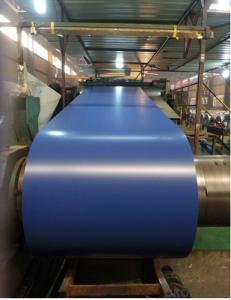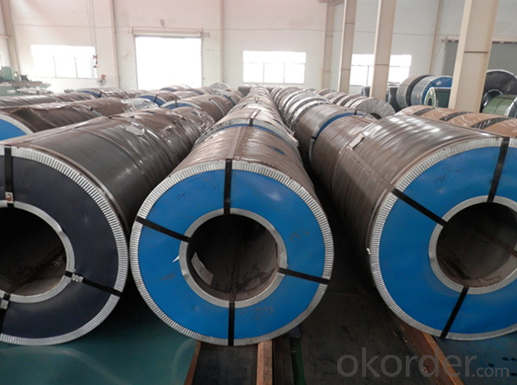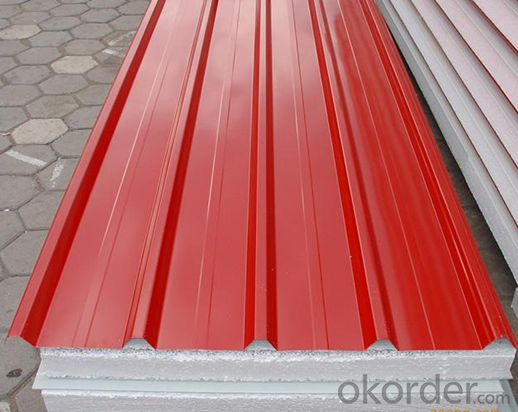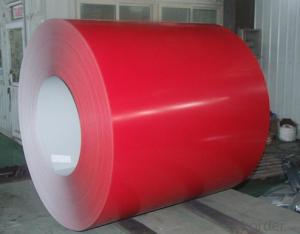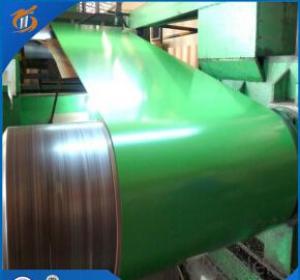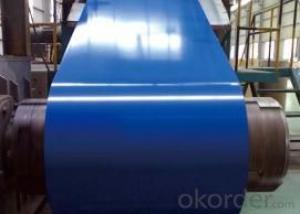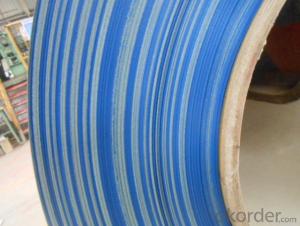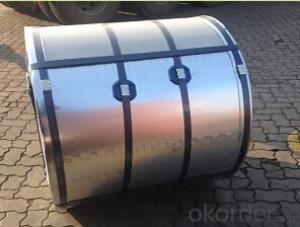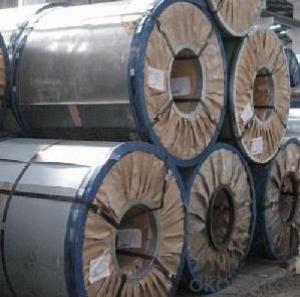PPGI/Pre-Painted Galvanized Steel Coil/Construction Purposes Az80-Az140
- Loading Port:
- China main port
- Payment Terms:
- TT OR LC
- Min Order Qty:
- 25 m.t.
- Supply Capability:
- 100000 m.t./month
OKorder Service Pledge
OKorder Financial Service
You Might Also Like
Pre-Painted Galvanized Steel Coil/Construction Purposes Az80-Az140
Product Description
Product Name: China PPGI manufacturer/PPGI MILL
PPGI coils
PPGI steel coils
PPGI galvanized coils
PPGI zinc coated coils
Pre-painted galvanized steel coils
Color coated steel coils
Color coated steel coils
Red color/blue color steel coils
Color coated PPGI FOR metal roof
DX51D color coated corten steel coil(PPGI)
Prime prepainted galvanized steel coil
White color prepainted steel coils
Color steel coil for roofing material
Dx51d+z prepainted steel coil
Colorful galvanized steel coil
Specifications:
Grades: Q195-Q235 and SPCC, SPCD, SPCE, SGCC (DX51D+Z) and SGCD (DX52D+Z)
Thickness: 0.13 to 2.0mm
Width: 600 to 1200mm or customized
Coil inner diameter: 508 to 610mm
Coil weight: Customized
Color: RAL
Surface protection: PE, PVDF, SMP and HDP
Surface treatment: Chromate, oil/un-oil, bright finish, spangle and anti-finger print
Standards: JIS G3302, JIS G3312 and ASTM A653M/A924M 1998
Zinc coating weight: 60 to 275G/M
Features:
Nice corrosion-resistant: Zinc layer provides nice protection of pre-painted galvanized steel sheet
High heat resistant: Reflective surface of material aids in efficiently reflecting sunlight away and turn reducing amount of heat transmitted, thermal reflectivity converts into energy-saving.
Coating adhesive force of color-coated sheet is strong, which keeps color and luster novel for long.
Widely used in such field as architecture, electrical home appliances, furniture, communal facilities, communications and transportation.
PPGI prepainted sheets and coils
Product thickness: 0.135 to 2.0mm
Product width: 760 to 1250mm
Coil weight: 5 to 10 metric tons
Coil ID: 508mm
Coil OD: Max 1500mm
Coating type: PE
Standards: JIS G 3312, ASTM A755M, GB/T 12754, Q/CHG 2-2003, EN 10143, DIN 17162
Material: TDC51D, AZ150, SGCC, CGCC, SPCC195L, TSGCC, CCGI, Q195-Q235, SPCD, SPCE
Color: RAL
Zinc coating: 60 to 275G/M²
Application: Construction, hardware, home appliances, interior decoration and more.
NAME | PPGI | GALVANIZED | GALVALUME/ALUZINC |
CERTIFICATE | ISO9001:2008 | ||
| EN10142 | ASTM A653 | ASTM A792 |
| CGCC | SS GRADE33-80 | GRADE33-80 |
MODEL NO | 0.16MM-1.5MM*1250MM OR UNDER | (0.12-1.5)*1250MM OR UNDER | 0.16MM-1.5MM*1250MM OR UNDER |
| Steel coil | Steel coil | Steel coil |
| Hot rolled-cold rolled | Hot rolled-cold rolled | Hot rolled-cold rolled |
SURFACE | Mini/regular/big/zero spangle, | Mini/regular/big/zero spangle, | |
APPLICATION | Structural use ,roofing, commercial use, household appliance, industry, family | ||
SPECIAL | Wear resistant steel, high- strength - steel plate | ||
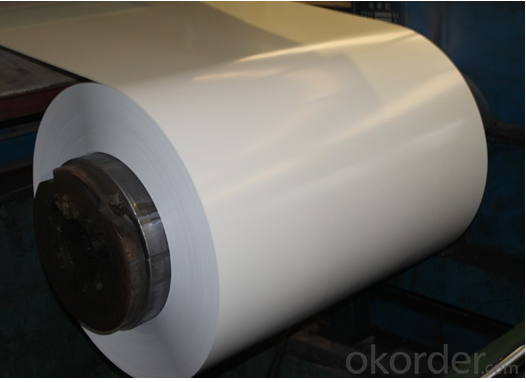
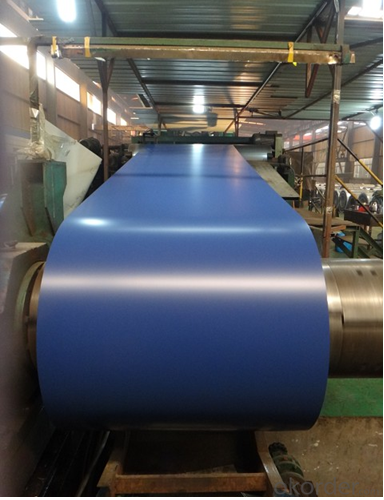
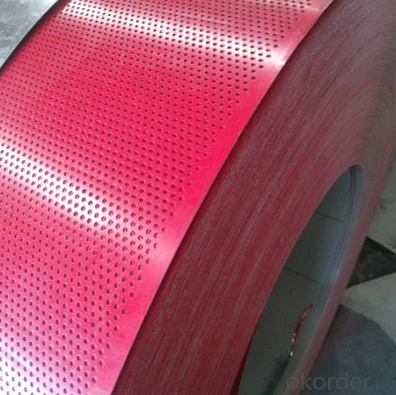
FAQ
1.What's your MOQ?
25MT, it is for one container.
2.Do you have QC teams?
Yeah, sure, our QC team is very important, they will keep the quality control for our products.
3. What's your normal delivery time?
Our delivery time about 10-20days for standard sizes, if you have other requirements like hardness and width ,it is about 20-40days. But don't worry ,we also try our best for the delivery time ,because time longer and our cost is higher.
4.Are the products tested before shipping?
Yes, all of our PPGI and GI was qualified before shipping. We test every batch every day.
- Q: How does the thickness of a steel coil affect its applications?
- The applications of a steel coil are significantly affected by its thickness. The thickness of the coil is what determines its strength, durability, and versatility, thus making it suitable for various uses in different industries. In industries where strength is of utmost importance, such as construction, thicker steel coils are preferred. Thicker coils provide higher structural integrity and load-bearing capacity, which are essential in projects involving buildings, bridges, and infrastructure. Moreover, thicker steel coils offer better resistance against bending, warping, and other forms of deformation, making them ideal for heavy-duty applications. The durability of a steel coil is also influenced by its thickness. Thicker coils exhibit greater resistance to wear, corrosion, and damage, making them suitable for harsh environments or applications that involve constant friction or exposure to elements. For instance, thicker steel coils are commonly utilized in the manufacturing of heavy machinery, automotive parts, and mining equipment, where durability is of paramount importance. Furthermore, the thickness of a steel coil determines its versatility and adaptability. Thinner coils can be easily shaped into different forms and sizes, making them suitable for applications that require intricate designs or tight tolerances. Industries such as automotive, aerospace, and consumer electronics often rely on thinner steel coils due to their lightweight and flexible nature. On the other hand, the weight and reduced flexibility of thicker steel coils may limit their range of applications. They are better suited for applications that prioritize strength and durability over versatility. These applications include structural components, large-scale machinery, and industrial equipment. To summarize, the thickness of a steel coil plays a pivotal role in determining its applications. Thicker coils offer increased strength, durability, and resistance, making them ideal for heavy-duty applications in the construction and manufacturing industries. Conversely, thinner coils provide versatility and adaptability, making them suitable for applications that require intricate designs or lightweight properties.
- Q: if steel is heated from room temperature (20c) to (500c) what would be the change in density?coefficient for linear expansion of steel 12x10^-6 k density of steel 7800 kg
- First you have to convert the coefficient of linear expansion to a coefficient of volumetric expansion. Multiply the coefficient of linear expansion by 3: Coefficient of expansion of steel,β:12E-6/°K x 3 = 36E-6/°K Difference in temperature: 480°K ΔV = VoβΔT ΔV = Vo x (0.000036) x 480 ΔV = 1m? x 0.017 ΔV = 0.017m? Originally, the steel was at 7800 kg/m? Now, the steel was at 7800 kg/ 1.017m?, or 7670 kg/m? Change in density = 7670 - 7800 = -130kg/m?
- Q: I heard that titanium isn't the most hypoallergenic metal because it is treated and the chemicals can cause an allergic reaction. I also heard that surgical steel is the best because it is what is used in surgery and in hip replacement implants etc. Is this correct?I've always heard that titanium is best, but now I'm curious because surgical steel is much cheaper than titanium which can be expensive.Thanks
- Implant grade titanium is much better than surgical steel. The nickel content in it (which is what alot of people are allergic to) is virtually non-existant. Though most people with a nickel allergy are fine with surgical steel too, its too small for most people to react to. But the odd few people do. Its the same with everything. Good surgical steel is probably better than cheap titanium. But implant grade ti will beat it hands down. And ti is alot stronger, and is also used in surgical impants and as replacement bits too. But a big lump of titanium hip is going to be expensive. If you're not allergic to steel, theres little reason for the extra cost, especially if it's likely to outlive you. Niobium has no nickel in at all. But that really is expensive, and I've never seen any threaded. Any particular reason why you ask? ----- Piercing-wise titanium will be better than steel. Unless they carry some not so great ti. You should be fine with steel though.
- Q: Can steel coils be coated with epoxy?
- Yes, steel coils can be coated with epoxy. Epoxy coating provides a protective layer that enhances the durability and corrosion resistance of steel coils.
- Q: How are steel coils used in the production of steel beams?
- Steel coils are an essential component in the production of steel beams. These coils are typically made by hot rolling steel strips in a continuous process. The coils are then sent to a steel beam manufacturing facility to be further processed. Firstly, the steel coils are uncoiled and flattened to obtain a flat surface. This ensures the uniformity of the beam's dimensions and improves the overall quality. The uncoiling process involves feeding the coil through a series of rollers, which gradually unroll the steel strip. Once the steel strip is uncoiled, it is then cut into specific lengths, depending on the desired size of the steel beams. This cutting process is typically done using automated machines, which ensure precision and accuracy. Next, the cut steel strips are shaped into the desired profile of the steel beams. This is achieved through a process called roll forming, where the steel strip is passed through a series of rollers that gradually bend and shape it into the required shape. The roll forming process can create various types of steel beams, such as I-beams, H-beams, and U-beams, depending on the design and structural requirements. After the roll forming process, the steel beams undergo further finishing operations, such as straightening, welding, and surface treatment. Straightening ensures that the beams are perfectly aligned and free from any deformations. Welding is performed to join different sections of the beams together, ensuring their structural integrity. Lastly, the beams are surface treated, usually through processes like shot blasting or painting, to protect them from corrosion and enhance their appearance. In summary, steel coils play a crucial role in the production of steel beams. They provide the raw material that is uncoiled, cut, shaped, and further processed to create high-quality steel beams. These beams are widely used in various construction projects, ranging from buildings and bridges to industrial structures, making them an essential component in the construction industry.
- Q: Can steel coils be bent or formed into different shapes?
- Yes, steel coils can be bent or formed into different shapes. Steel coils are typically made from flat rolled steel, which is flexible and can be easily manipulated. The bending process involves applying force to the steel coil, causing it to change shape and form into various configurations. This can be achieved through different techniques such as cold bending, hot bending, or using specialized machinery like a press brake. By applying the appropriate amount of force and heat, steel coils can be bent or formed into a wide range of shapes, including curves, angles, and complex geometries. This versatility in shaping steel coils makes them highly adaptable for various applications, such as in construction, manufacturing, automotive, and many other industries.
- Q: I'm assuming that brass is flexible, expands and then bounces back to it's original shape. But if aluminum and steel expand and don't contract wouldn't they cause guns to jam more often for example?
- This Site Might Help You. RE: Why can aluminum and steel casings not be used for reloading? I'm assuming that brass is flexible, expands and then bounces back to it's original shape. But if aluminum and steel expand and don't contract wouldn't they cause guns to jam more often for example?
- Q: What are the different methods of coil slitting for steel coils?
- There are several methods of coil slitting for steel coils, including rotary shear slitting, loop slitting, and drag slitting. Rotary shear slitting involves using rotating knives to cut the coil into narrower strips. Loop slitting involves creating a loop in the coil and feeding it through a set of knives to slit it. Drag slitting involves pulling the coil through stationary knives to slit it. Each method has its own advantages and is chosen based on the specific requirements of the application.
- Q: I would like to build steel galvanization plant.
- bcaz of the very corrosive conditions in petrochemical plants, steel without coating doesnt work. coating with zinc (e. g. hot dip galvanizing) help protecting the steel for more time, in simple words , zinc is corroded instead of iron and until there is some zinc on the surface steel is protected. we usualy dont use paint coating bcaz: 1.any porosity in the paint coat result in severe corrosion and steel should be completely coated with paint to be protected ,instead large prosity in zinc coating doesnt matter at all 2. usual painting materials arent proper for the severe corrosive condition ASTM standard( american society for testing and materials) offer world accepted standards for painting quality control
- Q: I am making a permanent magnet, just for fun. I am trying to find the best grade of steel to do so with.
- This page on spark test tells how to use a grinding wheel to get a rough idea of what you've got. Includes drawings of sparks for magnet steel;
Send your message to us
PPGI/Pre-Painted Galvanized Steel Coil/Construction Purposes Az80-Az140
- Loading Port:
- China main port
- Payment Terms:
- TT OR LC
- Min Order Qty:
- 25 m.t.
- Supply Capability:
- 100000 m.t./month
OKorder Service Pledge
OKorder Financial Service
Similar products
Hot products
Hot Searches
Related keywords
